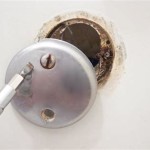How Much Does It Cost To Install Tile Around A Bathtub?
The process of installing tile around a bathtub can significantly enhance a bathroom's aesthetics and functionality. It provides a waterproof barrier, preventing water damage to the surrounding walls and floors, while also offering a wide range of design possibilities. However, a key consideration for any homeowner contemplating this renovation is the associated cost. Determining the final price involves several factors, including the tile material, the size of the area to be tiled, the complexity of the design, and the labor costs.
Understanding the breakdown of these costs is crucial for budgeting purposes. This article will delve into the various components contributing to the overall expense of installing tile around a bathtub, providing a comprehensive overview to help homeowners make informed decisions.
Material Costs: Tile Selection and Associated Materials
The type of tile selected will have a significant impact on the overall cost. Tile prices vary widely based on material, quality, size, and design. Ceramic and porcelain tiles are commonly used and are generally among the more affordable options. Ceramic tiles are typically less expensive than porcelain, but they are also less durable and less water-resistant. Porcelain tiles, known for their strength and low water absorption, offer better long-term performance, particularly in a wet environment like a bathroom. Expect to pay anywhere from $2 to $15 per square foot for these materials alone.
Natural stone tiles, such as marble, granite, and slate, offer a luxurious aesthetic but come at a premium price. These tiles can range from $5 to upwards of $50 per square foot, depending on the specific type and grade. Natural stone also requires specialized sealing and maintenance, adding to the long-term cost. Glass tiles are another option for achieving a modern and elegant look. They are usually priced between $8 and $30 per square foot.
Beyond the tile itself, other necessary materials also contribute to the overall material cost. These include:
- Mortar: Used to adhere the tiles to the wall surface, mortar comes in various types, with modified thin-set mortar being a common choice for its bonding strength and water resistance. Expect to pay between $20 and $50 per bag, depending on the type and brand.
- Grout: Filling the spaces between the tiles, grout prevents water from seeping behind the tiles and contributes to the overall finished look. Epoxy grout is a more expensive but highly durable and water-resistant option, suitable for high-moisture areas like around a bathtub. Cementitious grout is a more affordable alternative. A bag of grout can cost anywhere from $15 to $80, depending on the type and quality.
- Sealant: Applying sealant along the edges of the tiled area and around the bathtub is crucial for preventing water damage. Silicone caulk is commonly used for this purpose. A tube of sealant typically costs between $5 and $15.
- Backer Board: Cement backer board, like HardieBacker or Durock, provides a stable and water-resistant substrate for the tiles. It is essential for creating a long-lasting and waterproof tile installation. A sheet of backer board usually costs between $15 and $30.
- Waterproofing Membrane: Liquid waterproofing membranes, such as RedGard or Hydro Ban, are applied to the backer board to create an additional layer of protection against water intrusion. These membranes typically cost between $40 and $80 per gallon.
- Tools and Supplies: This includes items such as tile spacers, a tile cutter or wet saw, a grout float, sponges, buckets, and safety glasses. The cost of these tools can range from $50 to several hundred dollars, depending on the quality and whether they are purchased or rented.
Careful consideration should be given to the selection of these materials as they directly impact the durability and longevity of the tile installation.
Labor Costs: Hiring a Professional vs. DIY
Labor costs represent a significant portion of the total expense of installing tile around a bathtub. Hiring a professional tile installer ensures a high-quality and long-lasting result, but it comes at a price. The cost of labor varies depending on the installer's experience, the complexity of the project, and the geographic location. Generally, tile installers charge either by the hour or by the square foot.
Hourly rates for professional tile installers can range from $50 to $150 or more, depending on experience and location. Charge per square foot typically fall between $5 and $15, encompassing the preparation of the surface, the installation of the tile, and the grouting process. More intricate designs or smaller tiles increase the per-square-foot cost due to the added time and precision required.
When obtaining quotes from different installers, it is vital to ask for a detailed breakdown of the services included. This should cover surface preparation, tile layout, cutting and installation of the tiles, grouting, sealing, and cleanup. Also, be sure to check their licensing and insurance to protect yourself from liability in case of accidents or damage during the project.
Opting for a DIY approach can potentially save on labor costs, but it requires a significant investment of time and effort. It also assumes a certain level of skill and experience. Improper installation can lead to water damage, cracked tiles, and other costly problems down the line. If considering a DIY project, it is essential to thoroughly research the process, acquire the necessary tools and materials, and carefully follow installation guidelines.
Furthermore, a DIY project may take significantly longer to complete compared to a professional installation. Homeowners should factor in their own time commitment and potential disruption to their bathroom usage.
Ultimately, the decision to hire a professional or tackle the project independently depends on the homeowner's skill level, budget, and time constraints. For complex installations or those requiring specialized tools and techniques, hiring a professional is highly recommended.
Project Complexity and Additional Cost Factors
The complexity of the tile installation significantly influences the overall cost. Simple, straightforward designs with standard-sized tiles are less expensive to install compared to intricate patterns using smaller or irregularly shaped tiles. Complex layouts require more time and skill to execute, leading to higher labor costs.
The condition of the existing wall surface also plays a role. If the walls are uneven, damaged, or not properly prepared, additional work may be required to create a smooth and level surface for the tile installation. This may involve patching holes, applying a leveling compound, or even replacing sections of drywall or backer board. These extra steps can add to both the material and labor costs.
Removing existing tile is another factor that can affect the overall price. The cost of demolition and disposal of the old tile can range from $1 to $3 per square foot, depending on the type of tile and the ease of removal. This cost should be factored into the total budget if replacing existing tile.
Furthermore, any plumbing work required for the project will add to the cost. If the bathtub or shower fixtures need to be moved or replaced, a licensed plumber should be hired to handle the plumbing work. Plumbing costs can vary depending on the scope of the work, but it is essential to budget for this expense if necessary.
Unexpected problems that arise during the installation can also impact costs. For example, concealed water damage or mold growth may be discovered upon removing existing tile. Addressing these issues will require additional work and materials, leading to higher expenses. It is advisable to set aside a contingency fund to cover unexpected costs that may arise during the project.
Specific tile patterns also influence cost. Intricate mosaics or patterns with multiple sizes and shapes of tiles create a more labor-intensive installation, driving up labor costs. Simple grid patterns with larger tiles are typically less expensive to install.
The size and layout of the bathroom also affect pricing. A larger bathroom will naturally require more tile and labor, increasing the overall cost. Bathrooms with unusual angles or architectural features may also require more custom cutting and fitting of tiles, adding to the complexity and cost of the installation.
Finally, geographic location can impact material and labor costs. Prices for materials and labor tend to be higher in metropolitan areas compared to rural areas. Researching local prices and obtaining multiple quotes from different contractors is crucial for ensuring a fair and competitive price for the tile installation.

How Much Does A Bath And Shower Liner Cost Forbes Home

2024 Average Shower And Bathtub Specialist Cost

Cost To Install Tile The Home Depot

Cost To Replace A Bathtub 2024 Forbes Home

Installing Tub Surround Over Tile

Average Bathtub To Shower Conversion Cost 2024 Forbes Home

2024 Bathtub Liners Cost Installation And Materials Angi

Bathroom Tiling Everything You Need To Know About Costs And Installation Victoriaplum Com

What Is The Cost Of Replacing A Bathtub In 2024 Badeloft

How Much Does It Cost To Replace A Bathtub In 2024 Angi








